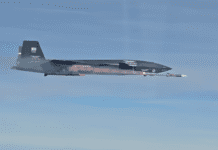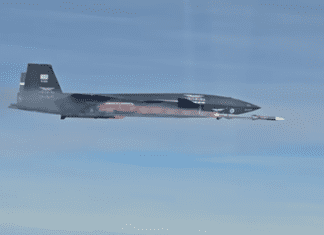This post is also available in:
 עברית (Hebrew)
עברית (Hebrew)
Sandia National Laboratories is doing what it has not done in decades: extending the life of a nuclear warhead at the same time the U.S. Air Force develops a replacement cruise missile that will carry the weapon.
According to Home Land Security News Wire , the goal of the W80-4 Life Extension Program (LEP) is refurbishing the W80 warhead with replacement components for aging technology and components that have limited lifespans. Sandia’s California site is responsible for development of non-nuclear components and subsystems and for systems integration. Lawrence Livermore National Laboratory is responsible for the refurbishment of the nuclear explosive package and joint development of detonators with safety features.
“The LEP will update the interface between the warhead and the missile to meet current Air Force standards and requirements, assuring nuclear safety and security,” said Paul Spence, who joined the program in February as manager of the W80-4 Systems Integration department. The W80-4 LEP builds on programs that began more than a decade ago.
The W80-4 LEP is moving from the concept phase, which includes system architecture development, mechanical layout and preliminary component design, to the feasibility study phase, which includes more detailed design work, maturing component technologies and fabricating prototype hardware. The feasibility study phase, officially known as Phase 6.2, was approved 23 July by the Nuclear Weapons Council (NWC).
Sandia Lab says that a life extension program refurbishes aging components that are reaching the end of their service life. Scientists and engineers make decisions to reuse, remanufacture or redesign weapons components. A reused component is requalified to go back into a weapon without change. A component which is determined to be past its original life is remanufactured to the original specifications. However, if some components can’t be remade to those specifications because the parts are not available anymore, Sandia redesigns them using modern parts.
In August 2014, the NWC, which coordinates stockpile activities for the Department of Defense and the National Nuclear Security Administration, chose the W80-4 as the warhead for the Long Range Stand Off missile, the Air Force’s successor to the current Air Launched Cruise Missile.


























